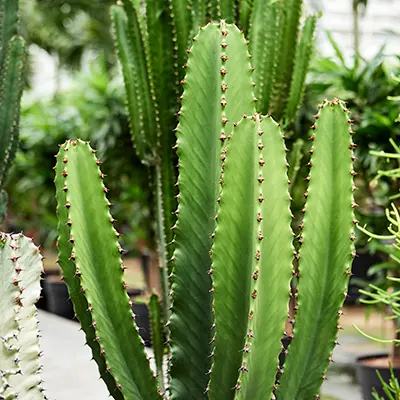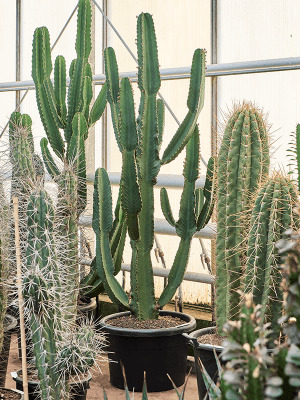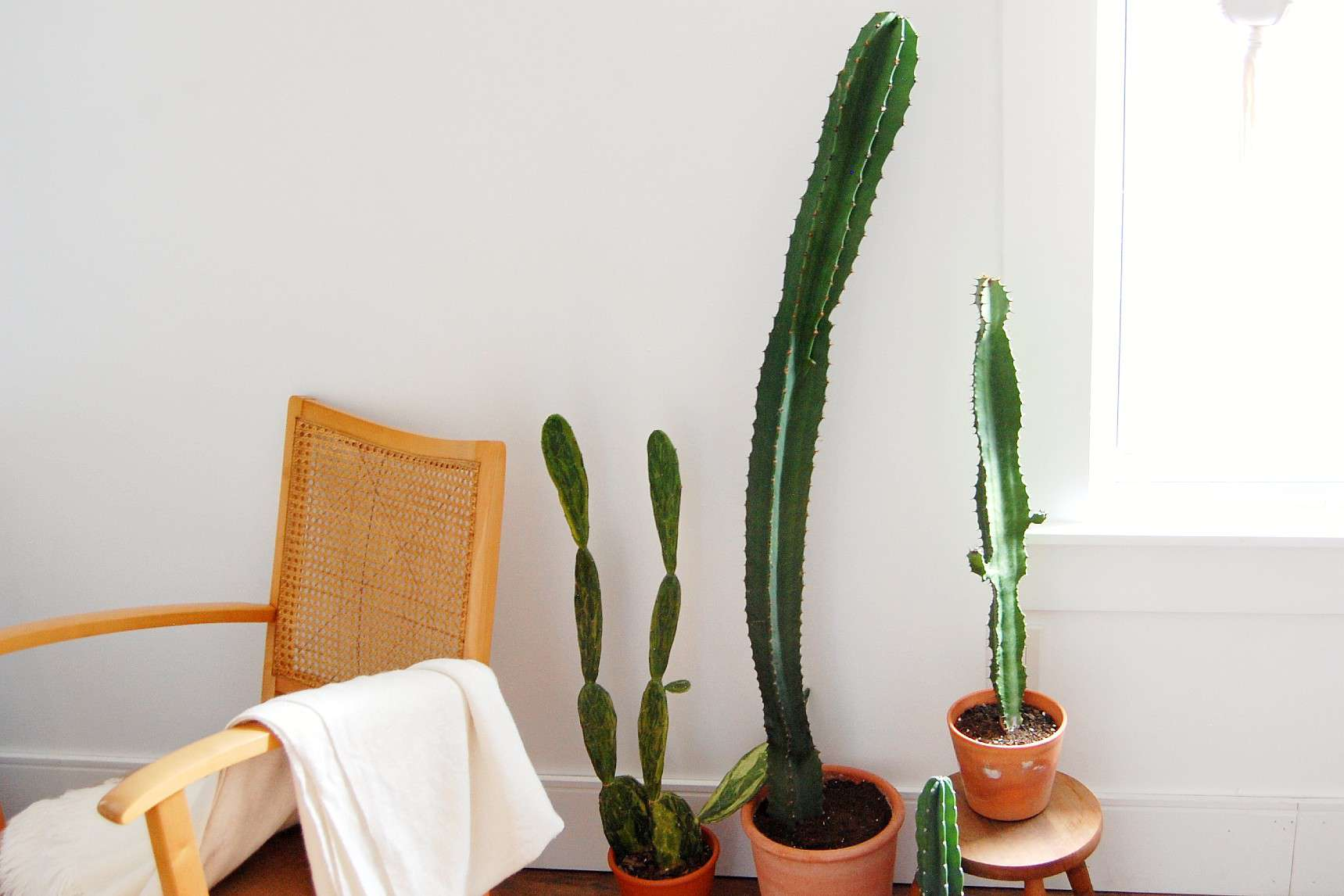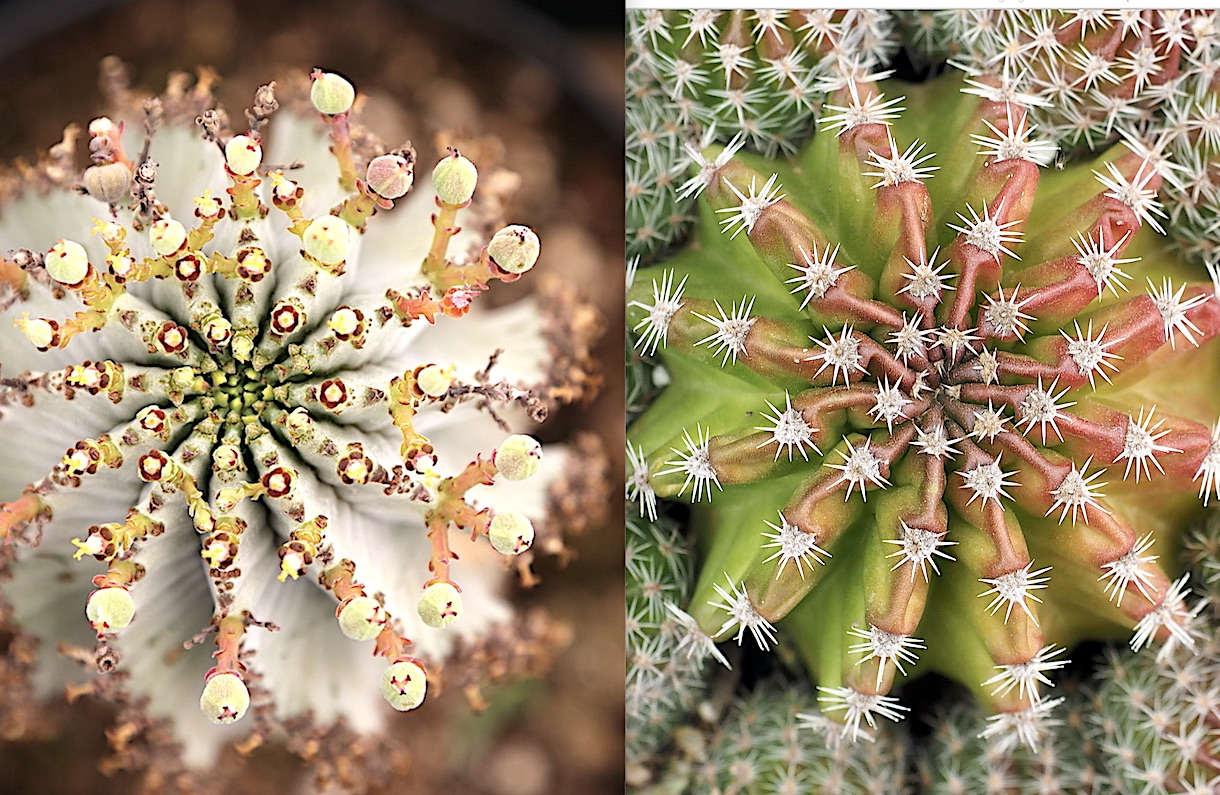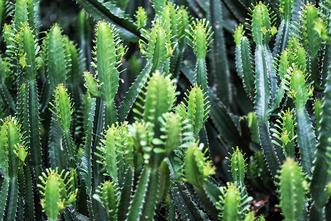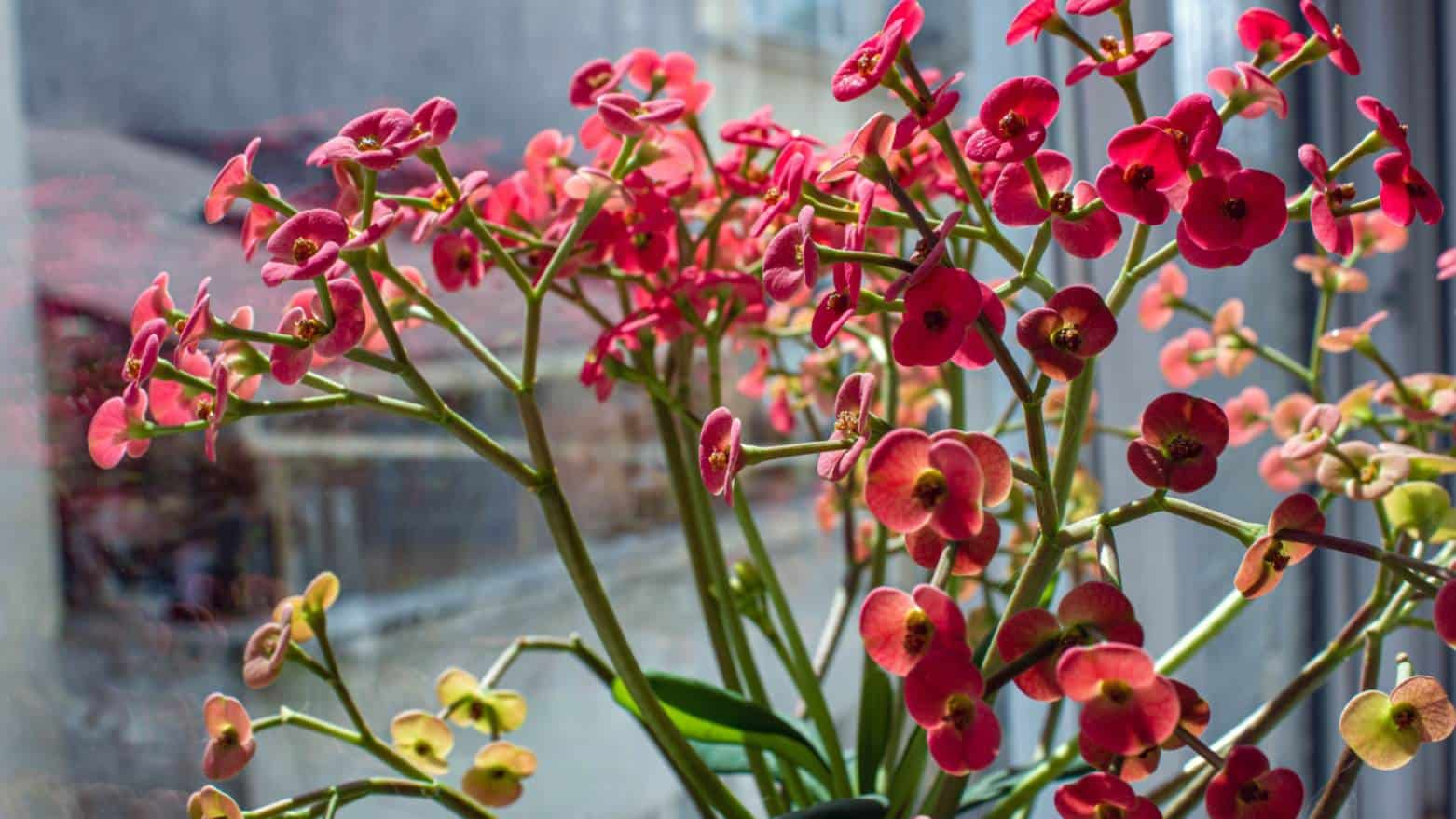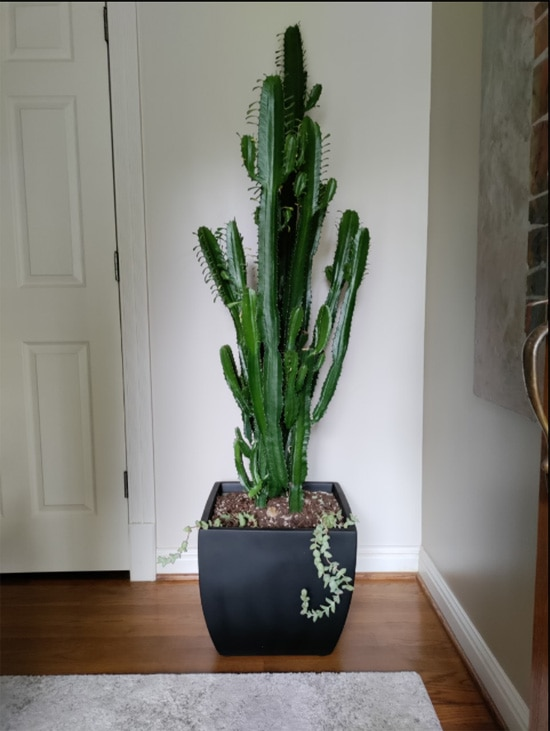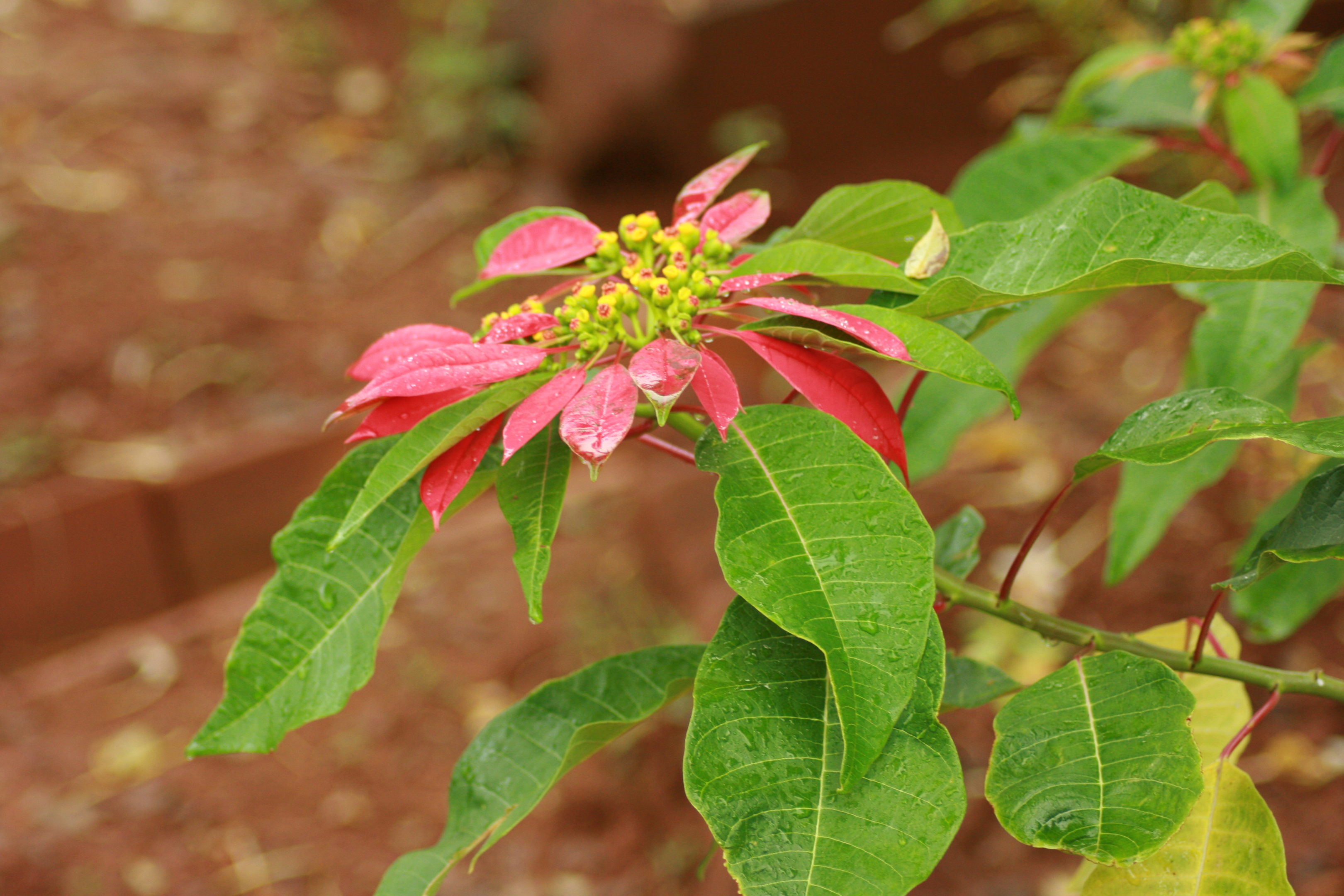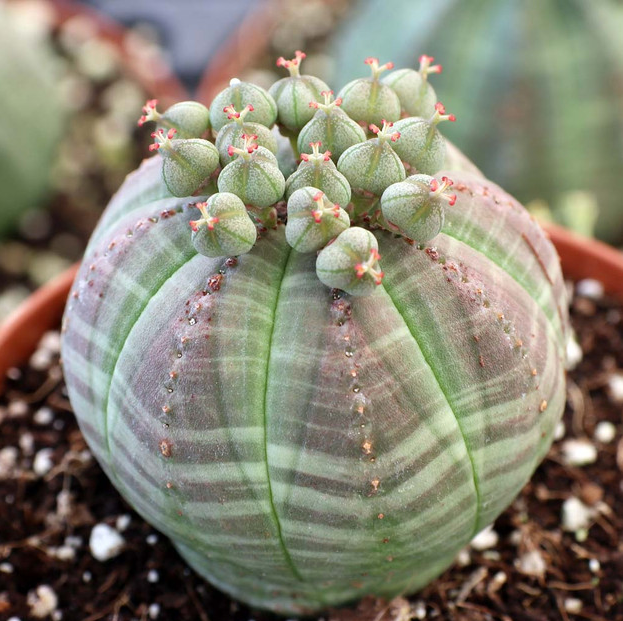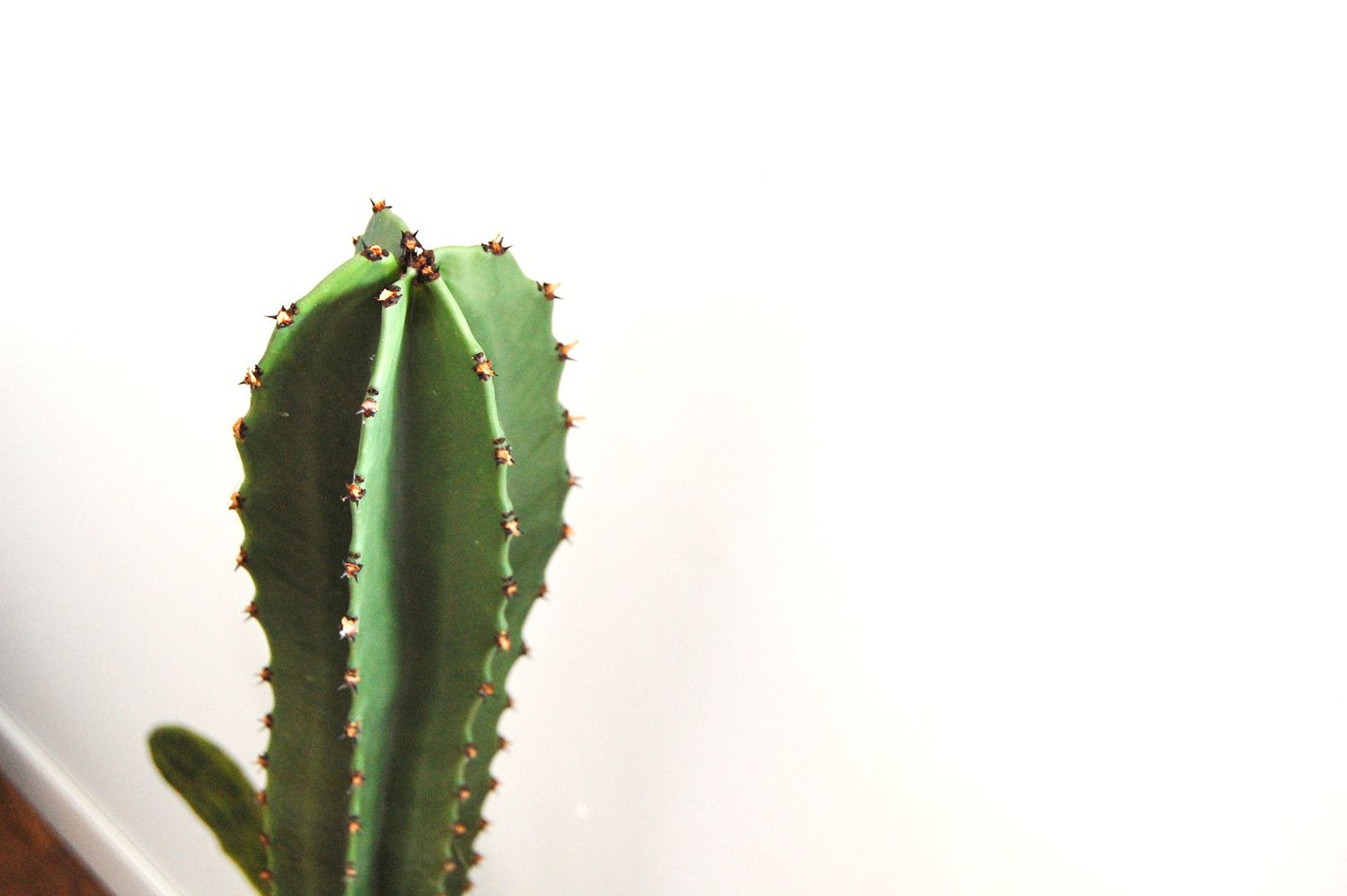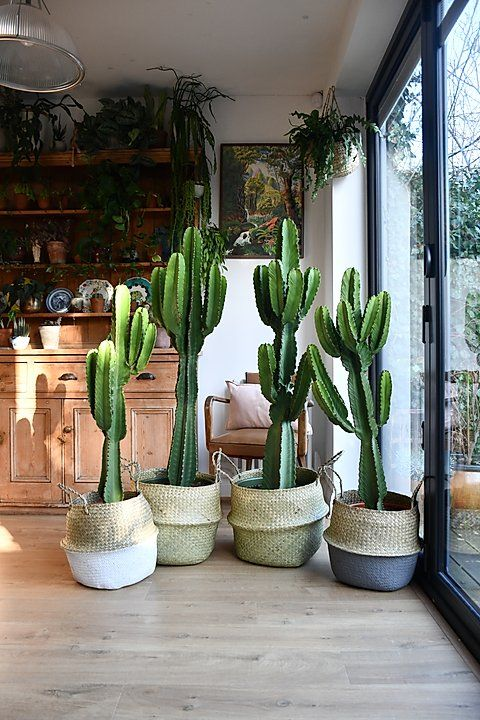HousePlantJoy is supported by our audience. When you purchase through one of our links, we may earn a small affiliate commission. As an Amazon Associate I earn from qualifying purchases. Your cost is not affected.
==================
Welcome to our comprehensive guide on exploring euphorbia cactus varieties! Whether you’re a seasoned succulent enthusiast or diving into the world of cacti, you’re in for a treat. As someone who’s spent years immersed in the captivating world of succulents and cacti, I’m excited to impart my passion and expertise to you. Euphorbia cacti, with their intriguing shapes, resilient nature, and stunning diversity, have always held a special place in my heart.
There’s something truly captivating about euphorbia cacti – from their striking appearances to their resilience in diverse environments. I can’t wait to impart all I’ve learned to fellow plant enthusiasts like yourself. So, let’s embark on this journey together and delve into the fascinating world of euphorbia cacti!
Diving into Diversity: A Comprehensive Exploration of Euphorbia Cactus Varieties
Photo by: Cambridge Bee
Euphorbia plants, commonly referred to as spurges, present a wide array of species that can infuse a distinctive flair into any indoor plant assortment. Despite their frequent association with “cacti,” Euphorbias are succulent plants within the family Euphorbiaceae. Renowned for their intriguing shapes, sizes, and blooming potential, these plants defy the traditional cactus image. While they may resemble cacti, euphorbias distinctly belong to the Euphorbiaceae family.
One reason euphorbias are popular indoor plants is their ability to withstand extreme heat and drought conditions. Thriving in arid climates, these resilient plants have adapted to endure, rendering them an excellent low-maintenance option for plant lovers. In a desert or a humid environment, euphorbias can thrive with minimal care.
In addition to their resilience, euphorbia plants can add beauty to any indoor space. Some species of euphorbias produce vibrant flowers, adding color to your home. From small succulent-like varieties to tall and imposing cactus-like plants, there is a euphorbia to suit every taste and space.
Key Highlights
- Euphorbia plants, commonly referred to as spurges, are often misidentified as “cacti”; however, they are succulent plants belonging to the family Euphorbiaceae.
- With over 2,000 different species, euphorbias exhibit a wide array of shapes, sizes, and colors. They are renowned for their succulent-like appearance and intriguing growth habits.
- These unique characteristics distinguish Euphorbia plants from other houseplants.
- From the Crown of Thorns to the Whale’s Tongue Euphorbia, various common species offer distinct features and visual appeal.
- Considering their low maintenance and diverse options, Including Euphorbia plants in your home can be advantageous, contingent upon your lifestyle and individual preferences.
Euphorbia Explorations: Unveiling the Enigmatic Succulents
Photo by: Nieuwkoop Europe
Before we explore the varieties of these plants, let’s take a closer look at them. Euphorbia is a large genus of plants belonging to the Euphorbiaceae family. With over 2,000 species, euphorbias come in various shapes, sizes, and colors. These plants are known for their succulent-like appearance and interesting growth habits. While they may resemble cacti, euphorbias are distinct in their own right.
Euphorbias are members of the Euphorbiaceae family and share some characteristics with other plants in the family. These plants generate a milky sap that is toxic and may cause skin irritation. It is important to handle euphorbias with care and keep them away from pets and children.
The Unique Characteristics of Euphorbia Plants
Photo by: The Spruce
Euphorbia plants, also spurges, have several unique characteristics that distinguish them from other houseplants. One of their most notable features is their succulent plant-like appearance. Many euphorbia species have thick, fleshy stems and leaves that help them retain water in arid conditions. This makes them well-suited for indoor environments with low humidity.
Another distinctive trait of euphorbia plants is their milky sap. This sap is produced by specialized cells within the plant and can be toxic and irritating to the skin. It is important to care for euphorbias, and wearing gloves when pruning or propagating them is important.
Some euphorbia species also have thorns or spines, which serve as a defense against herbivores. These thorns can vary in size and shape, depending on the species.
Euphorbia vs. Cacti: Spotting the Differences
Photo by: Debra Lee Baldwin
While euphorbia plants may resemble cacti in appearance, some key differences set them apart. One of the main differences is the presence of thorns or spines. Cacti typically have large, prominent thorns often used as a defense mechanism. Euphorbias, on the other hand, may have smaller, less conspicuous thorns or spines.
Another difference is the growing conditions preferred by these plants. Cacti are typically found in desert environments and are well-adapted to withstand extreme heat and drought. In addition to enduring these conditions, Euphorbias exhibit greater versatility and can flourish in a broader spectrum of environments.
Regarding classification, cacti belong to the family Cactaceae, while euphorbias belong to the family Euphorbiaceae. Despite their similarities, these plants evolved independently and have distinct characteristics that differentiate them.
So, while euphorbias may resemble cacti in appearance, they are not true cacti and have unique features that make them fascinating additions to any indoor plant collection.
Unveiling Euphorbia: Common Varieties Revealed
Photo by: CactusCare
This diverse group of plants boasts over 2,000 known species! Here, we’ll explore some of the most popular varieties of Euphorbia:
Crown of Thorns
Photo by: Planet Natural
Let’s talk about the Crown of Thorns Euphorbia, scientifically known as Euphorbia milii. It’s actually a flowering plant that falls under the spurge family, Euphorbiaceae, and its roots trace back to Madagascar. This beloved succulent, commonly grown indoors, showcases spiny stems and vibrant bracts that mimic flowers. It is available in a spectrum of hues, from red and pink to white and yellow.
African Milk Tree
Photo by: OurHouseplants
The African Milk Tree (Euphorbia Trigona), native to Central Africa, is a drought-tolerant plant that flourishes indoors. It’s a popular houseplant choice due to its architectural form and ease of care. The African Milk Tree grows upright stems and numerous branches that ascend upwards. These stems and branches often feature two or three sides, with triangular shapes being the most common.
Dark green stems adorned with V-shaped light green patterns characterize the African Milk Tree. Pairs of tiny thorns, approximately 5 mm in length, occur along the ridges of the stems. Small, drop-shaped leaves emerge from between these thorn pairs. Thriving in full sun with minimal water, this desert succulent is easy to care for and can tolerate extreme heat. Overall, the African Milk Tree, also known as the African Milk Plant, thrives as an attractive and low-maintenance addition to indoor spaces.
Poinsettia
Photo by: Wikispecies
The Poinsettia (Euphorbia pulcherrima), also known as the Christmas Flower or Nochebuena (Spanish for Christmas Eve), is a vibrant and popular houseplant during the holiday season. Originating from Mexico and Central America, this plant usually reaches heights of 0.6 to 4 meters (2 to 13 feet) when grown indoors. To promote its robust growth, it’s crucial to provide ample bright, indirect sunlight for a minimum of 6 hours daily while steering clear of direct afternoon sunlight. The foliage of the Poinsettia comprises dark green serrated leaves with pointed edges.
However, it’s best known for its colorful bracts (modified leaves) that resemble petals. While cultivating this plant, it’s crucial to be aware of its toxic sap, which can irritate the skin and eyes. To maintain a healthy plant relationship, keeping it out of reach of pets and children is advisable.
Baseball Plant
Photo by: Succulent City
The Baseball Plant (Euphorbia Obesa) earns its name with its charming and effortlessly maintained succulent form. This hardy plant is a favored choice for indoor cultivation thanks to its distinct round, baseball-like shape and minimal care requirements. Characterized by its spherical or oval shape, resembling a cactus, the Baseball Plant features a single stem adorned with smooth, gray-green skin marked by vertical stripes or ridges.
While it typically grows up to 8 inches (20.5 cm) tall and 4 inches (10 cm) in diameter, it may develop a more cylindrical shape as it matures. The Baseball Plant may produce small, inconspicuous greenish-yellow flowers during the spring or summer. Originating from South Africa’s Great Karoo, a semi-desert region, this hardy plant thrives with proper care. It prefers bright sunlight, although indirect, while harsh afternoon sun should be avoided to prevent scorching.
Candelabra Tree
Photo by: The Spruce
The Candelabra Tree (Euphorbia ingens), also known as the Candelabra cactus, stands out as a remarkable and sculptural succulent plant native to southern Africa. Particularly thriving in regions like South Africa, Mozambique, and Zimbabwe, it flourishes in its natural habitat, adapting to various environmental conditions. Part of the Euphorbiaceae family, this expansive succulent tree can reach towering heights of 30 feet (9 meters) or even more. It features a sturdy, erect columnar stem embellished with numerous conspicuous branches reminiscent of candelabras, hence its popular moniker.
Its stem, typically pale green or bluish-green, is covered with sharp, triangular thorns or spines, serving as a protective mechanism. Although not frequently encountered as a houseplant because of its size, the Candelabra Tree can thrive in containers in cooler climates as long as it’s shielded from chilly temperatures. It thrives and exhibits its full potential in its natural habitat, reaching its maximum height. Despite its stature, this plant’s growth is often stunted when cultivated in containers or less favorable environments.
Other Interesting Euphorbia Varieties
- Medusa’s Head (Euphorbia lacunosa): This intriguing succulent, which originates from South Africa, features a bulbous stem adorned with snake-like appendages. It boasts a unique and captivating appearance.
- Snowflake Euphorbia (Euphorbia polygona ‘Snowflake’): This popular indoor garden choice showcases variegated leaves with white hues bordered by green margins. Its charm and versatility make it a favorite among indoor gardeners.
- Fiddle Fingers (Euphorbia lophogona): Native to South Africa, this succulent boasts distinctive, fiddle-shaped leaves adorned with green hues and striking purple markings, adding an exotic touch to any collection.
- Whale’s Tongue Euphorbia (Euphorbia aphylla): This Madagascar-originated succulent features large, flattened pads that closely resemble the shape of a whale’s tongue. Its unique appearance and origins make it a fascinating addition to any succulent garden.
Here’s a video featuring additional types of Euphorbia.
By: Cactimania
Are Euphorbia Plants Good for My House?
Photo by: Le Botanist
Euphorbia plants can be a beneficial addition to your house, depending on your lifestyle and preferences. Here’s a breakdown of the pros and cons to assist you in making a decision:
Low Maintenance: As most Euphorbias are succulents, they require infrequent watering and are generally easy to care for.
Wide Variety: Euphorbias come in numerous shapes, sizes, and colors, offering versatility to complement your décor. Some feature intriguing sculptural shapes (like the Candelabra Tree), while others boast unique foliage (like Snowflake Euphorbia).
Air Purification: Euphorbias may aid in purifying the air by removing common toxins such as formaldehyde and benzene.
Toxicity: All parts of Euphorbia plants are toxic if ingested, and the milky sap can irritate the skin and eyes. This is especially crucial to consider if you have pets or small children.
Light Requirements: Most Euphorbias need ample bright, indirect sunlight. If your home has sufficient sunlight, they may thrive.
Winter Care: Certain Euphorbias (like Poinsettias) are seasonal and may require specific care to rebloom.
Here Are Some Additional Factors to Consider:
- Your Lifestyle: If you travel frequently or forget to water plants regularly, Euphorbias’ low water needs might suit you.
- Sun Exposure: Evaluate the amount of natural light your house receives. Euphorbias generally require bright, indirect sunlight.
- Pets and Children: Euphorbia’s toxicity could pose a concern if you have pets or small children who might ingest the plant.
Here’s a video showcasing various types of succulents that you can cultivate in your house.
By: PlantDo Home & Garden
Exploring the Beauty and Diversity of Euphorbia Varieties
In conclusion, delving into the world of Euphorbia cactus varieties offered a captivating journey filled with diversity and charm. From their unique shapes and resilient nature to their stunning array of colors, Euphorbias held a special place in the hearts of plant enthusiasts. While their succulent-like appearance and intriguing growth habits made them a popular choice for indoor cultivation, factors such as their toxicity and light requirements were essential to consider when deciding if they were suitable for your home.
By exploring the pros and cons and understanding their care needs, you could make an informed decision about incorporating Euphorbia plants into your indoor space. Whether you were a seasoned, succulent enthusiast or a newcomer to the world of cacti, Euphorbias offered endless possibilities for enhancing your landscape and décor. So, let’s embark on this journey together and discover the beauty and diversity of Euphorbia cactus varieties! Visit the Houseplant Joy for expert tips, care guides, and inspiration. Let’s cultivate joy together with these fascinating plants!
Frequently Asked Questions
Are Care Requirements for Euphorbia Plants the Same?
Although Euphorbias constitute a broad and diverse plant group, they generally share common care requirements. However, variations in the specific needs of different Euphorbia species may exist.
Do I Need to Prune My Euphorbia Plants?
Whether to prune Euphorbia plants depends on the specific type and your desired outcome.
- Generally Low-Maintenance: Many Euphorbias don’t require regular pruning to stay healthy.
- Pruning for Shaping or Size Control: If your Euphorbia is becoming leggy or overgrown, strategic pruning can encourage bushier growth or help maintain a desired size.
- Deadheading: On some Euphorbia varieties, removing spent flowers or flower stalks can enhance aesthetics and potentially stimulate new growth.
Can Sandy Soil Help Prevent Root Rot?
Sandy soil can aid in preventing root rot in some instances. Here’s why:
- Drainage: Sandy soil comprises large particles with gaps, facilitating effective drainage. This prevents water from pooling around the roots, a common cause of root rot.
- Reduced Moisture Retention: Sandy soil has lower water retention capabilities than soil types like clay. Consequently, it discourages roots from being exposed to excessively damp conditions that encourage fungal growth and subsequent root rot.
Discover the Oasis: Your Hub for Cactus & Houseplants!
Connect with kindred spirits and explore the enchanting world of cacti and houseplants!
Follow us on Facebook, Instagram, Pinterest, Twitter, YouTube, and TikTok for captivating content, insightful reviews, and a thriving community dedicated to all things green and growing! Let’s cultivate joy together!


